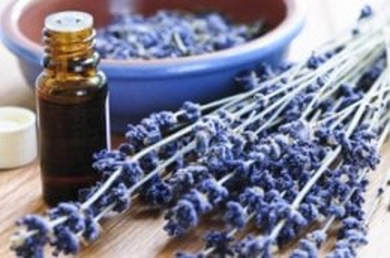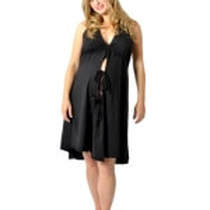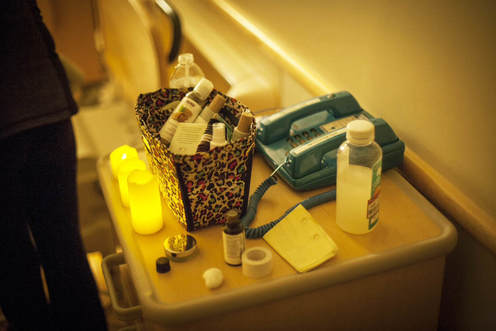 Hoping for a more natural birth? Here is How: A sneak peek into my doula-bag-o-tricks and you’ll find my stash of Aromatherapy. Yes, not only does the flowery, fruity, and earthy smell mask the creepy smell of hospitals but pure essential oils (EOs) can actually affect a birthing mama mentally, physically, and emotionally without the use of pharmaceuticals. Woot woot! Aromatherapy is a method of treatment in which pleasant smells are inhaled thus stimulating the limbic area of the brain, releasing neurochemicals into the bloodstream and promoting relaxation in the body. The right combination of smells can stimulate the body's production of endorphins (the body's own analgesic) and decrease the feeling of pain. Essential oils are not synthetic but rather are derived from plants and flowers. Essential oils can help you relax. Take a whiff of Lavender oil and notice how your facial muscles melt like wax and your breathing slows into a calm and rhythmic breathing pattern. Although a variety of essential oils can be used for labor and birth, my personal doula favorite is Lavender essential oil. Lavender can be put directly onto your skin. It can be used alone (neat) or in combination with other oils. Spearmint or Mint EO scent is good if you are feeling nauseous however it cannot be placed neat on the skin without a carrier oil because it can cause irritation. Essential oils can be mixed with carrier oil such as vegetable or nut oil (try extra virgin olive oil, jojoba, apricot kernel, wheat germ, sunflower, almond, or avocado) and placed in your bathwater or a diffuser to create a relaxing atmosphere. You can burn your favorite scents using a vaporizer to scent the air or put a few drops on your pillow, handkerchief, on your wrist or a hot damp facecloth. Try mixing a drop of each essential oil of Rose, Neroli, and sandalwood in jojoba oil you can rub into your forehead, face and neck. Ask your partner to mix your favorite essences with a carrier oil so that they can be massaged into your skin. The suggested mixture is about 4-8 drops of essential oil with 2 tablespoons of carrier oil depending on the strength you want. A cotton swab with a few drops of essential oil is perfect and can be tucked easily in mama’s bra strap or shirt for quick and easy inhalation. Cheat-Sheet of Essential Oils for Labor & Birth For Relaxation: Lavender, Geranium, Ylang Ylang, and Neroli To Relieve Nausea: Sniff a cotton swab with 3 drops of Peppermint or Spearmint or Lemon Energy Booster & Lift Spirits: Sweet Orange, Sandalwood and Jasmine For More Regular Contractions: Clary sage can stimulate uterine contractions and should be avoided during pregnancy. However, if you are dilating slowly in labor, you may ask your doctor if clary sage would be beneficial to you. Add a few drops of clary sage to a tablespoon of carrier oil and gently rub onto your tummy, shoulders, legs and back. At Birth: I advise my clients to use essential oils on a cotton swab which can easily be disposed at any time if mama no longer wants the scent. Additionally, mama should not have strong scents on her chest, neck and shoulders at the time the baby is about to be born. You can imagine that a room filled with strong essential oils can be strong and overpowering to a newborn. Massaging a woman’s low back with a massage oil combination is no problem since the smell is away from mama’s breasts and should not affect the baby at birth. Side effects Some women may be allergic to aromatherapy essential oils and experience side effects of nausea, vomiting or headaches. If this occurs discontinue use immediately. To order essential oils, reach out to my friend Mai Serenity and order here: https://www.doterra.com/US/en/site/maiserenityspace I have seen mamas sail through birth with just a few cotton swabs of aromatherapy. And the best part is that aromatherapy is au-naturel and easy to use. [Originally published February 26, 2013]
0 Comments
I recently read an awesome article by one of my favorite childbirth blogs called Midwife Thinking’s Blog. The topic was called “Cord Blood Collection: Confessions of a Vampire-Midwife,” posted February 10, 2011. It was well-timed since I just received an email from a Representative of Pacificord- Cord Blood Collection. Funny how they got my name and email? What was most interesting is his offer to give me (as a Doula) a $50 referral fee for every client I sent to them and booked an account. Wow! Now, I know this type of thing happens at doctors’ offices but this is the first time, as a doula, I have been approached and been offered CASH for referrals. I am aware of doctors and hospitals receiving incentives for selling/recommending drugs or childbirth interventions but have never heard of doulas being approached. What happened to the doulas helping to be the Guardians of gentle birthing for moms and babies? I have to admit, for a quick second I thought, "Hmmm, who do I know that I can refer?" Then I quickly snapped myself back! But with such a generous referral incentive you can see how tempting it could be to pass along the Pacificord brochures. Read The Midwife Thinking’s blog to learn more about the process of cord banking and the affect on baby. When you learn how much of the baby’s own blood volume is taken (about 1/3) it makes one really think hard about this topic of cord banking. The midwife further states, “I am not saying cord blood banking shouldn’t be an available option. All I am suggesting is that parents need adequate information before they make a decision to withdraw a significant amount of their baby’s blood volume. They need to be able to weigh up the definite benefits of full blood volume at birth vs a possible treatment for an unlikely future illness. Cord blood is baby’s blood.” I have read literature on both sides of the fence about cord banking. Cord banking is still in its infancy (no pun intended) since the 1980s. And in 1992, the University of Arizona banked the first cord blood sample in the world specifically stored for family use. Other factors could affect one’s decision about cord banking such as family history of certain diseases such as lupus, rheumatoid arthritis, leukemia, sickle cell anemia and type1 diabetes. The Thinking Midwife encourages parents to understand and be "... informed that cord blood collection requires premature cord clamping, and that the blood being collected belongs to their baby.” Could our current practice of early cord clamping be depriving the baby a chance to a better start? Here is another great article found in the British Medical Journal about the practice of early cord clamping. Dr. David J R Hutchon, retired consultant obstetrician, in England says, "I have always argued that applying a clamp to the cord is clearly an intervention, having the greatest effect when it is done quickly after birth." Early cord clamping has become so routine that we have forgotten to question its necessity. The practice of early cord clamping goes hand-in-hand with cord banking, unfortunately. Cord blood is baby's blood to benefit from it NOW not frozen for the small probability of use later. It is ultimately the parents’ choice to make. So unless upon request, you won't see me passing out cord banking brochures lest I be called...the Vampire Doula : ) [Originally published December 1, 2012]  http://www.prettypushers.com http://www.prettypushers.com If you are pregnant and wondering what to bring to the hospital or Birth Center for your upcoming labor & delivery, chances are you have already come across those long lists of what to pack. Sure, the essentials are obvious such as your toiletries, change of clothes, a coming home outfit for the baby…your husband and Birth Partner, duh of course! But, what about a SHORT list of the absolutely most essential things to bring with you that will make a big difference? I give you a short list of the top 10 most important things to pack in your hospital bag but often get overlooked, so if you are within 4 weeks of your due start packing your bag now.
[Originally published April 9, 2013] |
|

 RSS Feed
RSS Feed